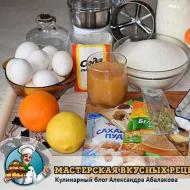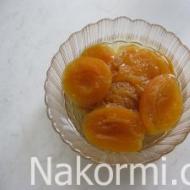
Subscribe over a cup of tea. Lecture "reading lessons over a cup of tea". Goods for children
Partners:

Dear friends! The project "Reading Lessons with a Cup of Tea" is completed. On the project page you can view the archive and video recordings of lectures.
Archive
October 14, 2017
"War and Peace" by Leo Tolstoy. Stronger than history?
You can argue as much as you like that Lev Nikolaevich Tolstoy portrayed Barclay incorrectly, and the War of 1812 was completely different... But this does not matter in the slightest! Lev Nikolaevich Tolstoy wrote Russian history, and it remained the way he portrayed it.
Alexander Arkhangelsky invites you to think, argue and re-read the great novel.
Lecturer:

Alexander Arkhangelsky- Russian literary scholar, literary critic, publicist, TV presenter, writer. Author, presenter and director of programs for the Kultura TV channel. Member of the Union of Russian Writers. Founding academician and president of the Academy of Russian Contemporary Literature (ARSS). Member of the Russian Television Academy. Author of a number of school textbooks, teaching aids, literature anthologies. Professor at the Faculty of Media Communications at the Higher School of Economics.
October 21, 2017
The golden ratio of the novel “War and Peace”. Lecture in open interview format
How did War and Peace begin? How was the idea born and the images, motifs, ideas developed, how was the style and genre structure of the book formed? Is a printed text always equivalent to the author's intention and implementation? Who helped and prevented Tolstoy from writing War and Peace?
All these questions will be the subject of discussion during an open interview and will allow us to take a fresh look at the essence of the author’s work on the great novel.
Lecturers:

Fekla Tolstaya- journalist, TV presenter.

Natalya Pavlovna Velikanova- Candidate of Philological Sciences, leading researcher at Moscow State University, textual critic, compiler and editor of publications of letters, unfinished works of L. N. Tolstoy, handwritten and printed texts of the book “War and Peace”.
October 28, 2017
Echo of the War of 1812: Decembrists
The Decembrists themselves began to think about themselves in the context of 1812. They talked a lot about the war and willingly. Some of them fought, but most suffered from the fact that they did not have time to take part in hostilities.
One way or another, the Decembrists were contemporaries of great historical events. The Decembrists' reflections on the war are of particular interest: based on them, we can judge the views on war in educated Russian society of the 1810s - 1820s.
Lecturer:

Oksana Kiyanskaya- Doctor of Historical Sciences, Professor of the Department of Literary Criticism, Faculty of Journalism, Institute of Mass Media, Russian State University for the Humanities
November 4, 2017
Leo Tolstoy is a free man
Dozens of memoirs have been written about Leo Tolstoy, the smallest facts of his biography are reflected in hundreds of letters and diary entries of his contemporaries. Nevertheless, the writer's life continues to remain a mystery.
How did a “trifling fellow” who did not receive a systematic education turn into a great writer and philosopher?
Why did Tolstoy sell his father’s house, why did he learn Greek in a month and a half at an old age, how did he save tens of thousands of starving people, why did he not like the “Tolstoyites,” why did he rewrite his will six times...
Pavel Basinsky sums up his many years of searching for the “true Tolstoy.”
Lecturer:

Pavel Basinsky- writer, literary critic, journalist, member of the jury of the Yasnaya Polyana literary award.
November 11, 2017
Why did the French come to Russia in the first half of the 19th century, and what kind of reception did they receive here?
Everyone who has read "Woe from Wit" and "The Captain's Daughter" remembers the "Frenchman from Bordeaux" and the teacher Beaupré. In addition to these fictional characters, many real French people came to Russia. Some of them were writers and captured ideas about what they saw in books; others became heroes of police denunciations; still others are the authors of spy reports. The gallery of the French in Russia is rich and varied. The story of their stay in Russia is worthy of becoming material not only for a lecture, but for an entire book.
Vera Arkadyevna Milchina, leading researcher at the Institute of Higher Humanitarian Studies of the Russian State University for the Humanities and the School of Current Humanitarian Studies of the Russian Presidential Academy of National Economy and Public Administration, will talk about some of them: about the writer Germaine de Stael, who visited Russia in 1812 and took a “political interview” with Emperor Alexander I, about the Marquise Astolphe de Custine, who came to Russia in 1839 as a fan of the Russian monarchy, and left Russia with great disappointment, as well as about the French who are much less famous, but no less brilliant: the poet Devaux-Saint-Felix, who glorified the chief of gendarmes Benckendorff in poetry, and the unlucky spy Alexander Baquier, who undertook to serve the Russian authorities, but was shipwrecked.
Lecturer:

Vera Arkadyevna Milchina- Leading researcher at the Institute of Higher Humanitarian Research of the Russian State University for the Humanities and the School of Current Humanitarian Research of the Russian Presidential Academy of National Economy and Public Administration.
Have you ever thought how cool it would be one day to make a complete list of all household consumables, such as washing powder, toothpaste, milk, etc., and give it to “good hands”, which at the right time would replenish their stock and free them up? do you need to keep it all in your head? For subscription commerce services this would be an ideal situation.
Everyone knows that in the West this business model is not only developed, but also continues to develop new niches. Indeed, the benefits are obvious for all parties to the deal: the buyer does not have to waste time on repeating orders, does not have to worry that the product will not be in stock or that the stock will run out at home; the seller, in turn, has better control over the warehouse and delivery, because he knows in advance the volume of deliveries and keeps a large amount in circulation. In Russia, I’m sure the subscription business can be as successful as in the West.
Today we bring to your attention a list of several subscription stores that hope to make our lives easier on a household level.
1. Razors
Shaveclub.ru is a company that offers a subscription to inexpensive and relatively high-quality razors of three types (six, four and three blades) at prices ranging from 150 to 190 rubles/month. The final cost varies depending on the subscription period. The site is almost an exact copy of the well-known Dollar Shave Club, which became famous thanks to a viral video clip with the founder of the company. Shaveclub's product range, like the original, is based on machines from the Korean company Dorco. I haven’t tried it - I don’t know about their quality, but Dollar Shave Club is clearly doing well in the US. Our guys should pay attention to related products and how they know how to present them. For example, Dollar Shave Club says that through numerous studies they have come to the conclusion that men prefer napkins instead of, excuse me, toilet paper and therefore they have developed and began selling this unique gender-specific product on their website. In addition, they also offer their own shaving cream.
2. Socks
A rather hackneyed topic that first appeared about five years ago along with the first articles about the company Blacksocks.com on sites like “1000 business ideas.” After that, it is presented as a super-successful case for subscription services, because men, you see, cannot figure out their socks (in fact, we cannot). Especially if you go to a store along the way and buy 10 pairs at once and not have to worry about it. Thanks to this, a whole brood of sock sellers appeared in the country: Dostavkanoskov.ru, Moinoski.ru, 2nocka.ru, LuxurySocks.ru, etc.
3. Briefs
More precisely, women's panties and a little men's. Trusbox.ru offers to deliver a set of four items and a “surprise” every month. The cost of the set is 600 rubles. for women and 1000 rub. for men. Plus delivery in Moscow 200 or to the regions 400 rubles. The project is part of the company Moleskines.ru LLC. Of course, founders Anna Gorodetskaya and Elena Lyubarskaya probably still need to work a little more on the site and texts, but the idea is probably interesting. By the way, Anna loves thongs, and Lena “wears hipster cut panties.”
4. Coffee
We immediately switch from laundry to coffee – Zharimkofe.ru. Founders Maxim Vasiliev and Daniil Sokolov. The guys simply roast coffee and sell it to individuals and organizations in their own roasteria (an establishment specializing in roasting). Cost from 590 to 890 rubles/month. Depends on the subscription period. I haven’t tried the coffee, but the site is well made, the reviews are good, including from some celebrities. For me, it’s a good niche project with almost endless demand.
5. Tea
Giftea is already about tea. The guys offer a subscription to ready-made tea sets with courier delivery. Delivery once a month. In addition to tea, freshly roasted coffee (Arabica only) and gift certificates are additionally offered. For orders over 1,500 rubles, delivery is free.
6. Pet food
Easypet.ru offers periodic delivery of food for dogs and cats. The problem is quite relevant, especially if you have two Rottweilers who destroy two bags of dry food a month and ask for more! The service is essentially an analogue of the Western Barkbox . com. By the way, investments worth $6.7 million have already been poured into this Birchbox for dogs. Competitors include LuckyDog and NatureBox, etc. In fact, competitors include any more or less large online store selling food, because they can easily outbid such a model with both a larger assortment and lower prices.
7. Products for children
Children, after pets, are the second most destructive force, which requires regular replenishment with toys, specialized food and other consumables such as diapers. We have already written in part about subscription kits for children here. We will only voice the main players: BimBasket, Two Palms, Magic Box, Bardabas, AistBox, etc.
8. Flowers
There is an opinion that flowers are given from time to time, but this is not always the case (unless you are a hero-lover and your business is not on stream). In fact, there are many organizations that constantly require the services of a florist, for example, hotels, high-end offices, event agencies, wedding agencies, etc. Similar services are provided by Bukettime . ru and Vazzon . com. In the USA, a similar service H b loom attracted as much as $16.9 million in investments.
9. Food
It would seem that this is the most popular group of products, simply created for subscription services, but there were very few of them. For example, “Local Food”, where a monthly box of products from local producers is collected. These are mainly cafes, bakeries, butchers, confectioneries, etc. The cost of this hipster box for October is 2,500 rubles.
10. Software
And at the end a little exotic. Popodpiske service . ru has to offer respected clients a software subscription, i.e. the user does not need to pay a large lump sum for professional software - he can pay for a subscription for a month, test the program for this period and abandon it. The range is approximately as follows: antiviruses, parental controls, finance and accounting, simple games, dictionaries, etc. They work with individuals and legal entities.
There are subscription product services in Russia, but the main obstacle for them remains logistics, i.e. difficulty in establishing inexpensive and reliable delivery. Unless you work in a city with a population of over a million and are able to deliver on your own.
Tea has millions of fans around the world. Many people prefer this aromatic and invigorating drink to the equally popular coffee. At the same time, when brewing tea or putting a tea bag into a cup, few people think about the history of this drink and the interesting facts that are associated with it.
1. Da Hong Pao

There is tea that costs $1,025,000 per kilogram. Da Hong Pao is considered the best tea in the world. It is grown in only one place in China.
2. Mustache has no place in tea

In the Victorian era, there were special tea cups that prevented mustaches from being accidentally dipped into tea. These cups were invented by British potter Harvey Adams in the 1860s, when mustaches were all the rage.
3. Tea is much healthier than coffee

Drinking tea reduces the risk of death from cardiovascular disease by 24%. According to French scientist Nicolas Danchen, who studies the effects of tea and coffee on our health, tea is much healthier than coffee.
4. Green tea increases metabolism

Drinking some green tea before bed will allow your body to burn calories while you sleep. Green tea also increases metabolism. For example, oolong tea increases metabolism by 10%.
5. China is the largest consumer of tea in the world

In the UK, around 165 million cups of tea are drunk per day, or 62 billion cups per year. The largest consumer of tea in the world is China, but if we count tea consumption per person, the situation is different - Turkey, Ireland and the UK are in the lead.
6. 2nd place after water

Tea is the most widely consumed beverage in the world after water.
7. Three billion cups of tea

On average, three billion cups of tea are consumed every day around the world.
8. The invention of tea bags

The invention of tea bags was accidental. The "culprit" was an American named Thomas Sullivan, a merchant from New York who began sending samples of tea to his clients in small silk bags. He meant that tea should be shaken out of bags into cups, but customers misunderstood him.
9. Dried tea bags

Putting used, dried tea bags in a gym bag or old shoes will help eliminate the unpleasant odor. You can also relieve pain from burns by applying the sachets.
10. Hair conditioner
Rinsing your hair with a cup of tea can make your hair shiny and less rough. However, this only applies to dark-haired people. Blonde hair can be stained with tea and become darker.
11. 3% caffeine

Decaf coffee and tea contain caffeine. Only 97% of caffeine is removed.
12. Rule for drinking tea with your little finger sticking out

The rule of drinking tea with the “little finger sticking out” appeared because of syphilis. One of the symptoms of syphilis is damage to the joints of the fingers.
13. Position of tea pourer

In Morocco there is a special position for tea pourer. The person pouring the tea should hold the teapot high above the cup or glass to create foam.
14. Facial toner

Tea is a good facial toner. It helps make the skin less oily.
15. Camellia Sinensis

There are many different types of tea, but they all come from one plant: Camellia Sinensis. All differences (color and taste) depend on the method of processing the tea leaves.
16. Iced tea

According to legend, tea was invented by the Chinese Emperor Shen Nung in 2737 BC. As for iced tea, it was first served in St. Louis during the 1904 World's Fair. The weather was very hot then.
17. 6 categories of tea

18. Cleaning wooden furniture

Tea can be used to clean wooden furniture. You just need to wipe the wooden furniture with a clean cloth soaked in chilled tea, then wipe the furniture dry with another cloth.
19. Parents and tea teachers

Proverb about tea: “Water is the mother of tea, the teapot is its father, and fire is its teacher.”
20. Me and my Masha at the samovar

Famous songs about tea: “Come to me, Glafira,” “Me and my Masha at the samovar,” and “The samurai ate rice and drank tea.”
Especially for those who love tea, but do not want to master the intricacies of the tea ceremony,
















